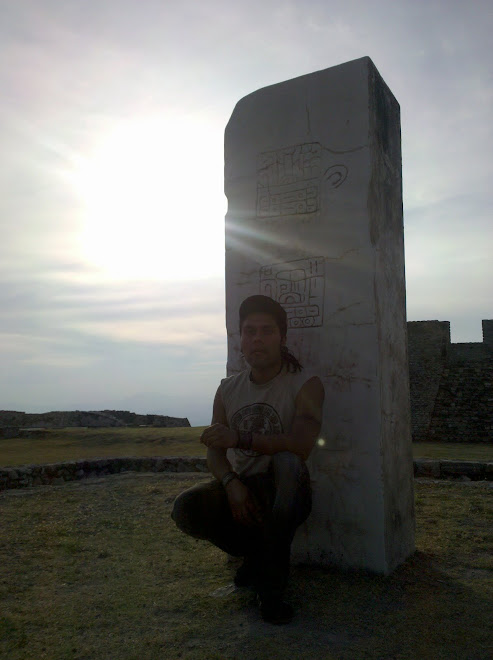






,Tula (or Tollan) was the capital of the Toltec empire and followed Teotihuacan as the strongest power in Mesoamerica.The Toltecs spoke Nahuatl, which was also spoken by the Aztecs. The city of Tula was located about 50 miles north of present-day Mexico City and contained impressive buildings,
The Toltec empire is believed to have been destroyed around 1200 AD by the nomadic warriors of the Chichimecs. The ruling family of the Aztecs claimed to descend from Toltec ancestry via the sacred city of Colhuacan. Most Toltec history is known from writings of later people, such as the Aztec, written centuries later after a "dark age" in Central Mexico, together with some references by the Maya. Toltec rulers are said to have included:
Chalchiuh Tlatonac - first Toltec king, founder of Tula
Mixcoamazatzin
Huetzin
Mixcoatl or Mixcoatl Totepeuh
Ihuitimal
Topiltzin Ce Acatl Quetzalcoatl, son of Mixcoatl, the most famous Toltec ruler
Matlacxochitzin
Nauhyotzin
Matlacoatzin
Tlilcoatzin died c. 1000 (?)Huemac the last Toltec king, died in exile c. 1100 (?), some 6 years after the fall of Tula The Toltec Empire and leaders created an unmatched mystique in the minds of the Central American people. The Toltec leaders were thought of as being alongside deities. Later cultures often revered them and copied their legends, art, buildings and religion. Many future rulers of other cultures, including Mayan leaders and Aztec emperors, claimed to be descended from the Toltecs. Religion in the Toltec Empire was dominated by two major deities. The first, Quetzalcoatl, is shown as a plumed serpent. This deity of learning, culture, philosophy, fertility, holiness and gentility was absorbed from earlier cultures in the area. His rival was Tezcatlipoca, the smoked mirror, known for his warlike nature and tyranny.
The greatest ruler of the Toltecs was Ce Acatl Topiltzin who was renown for being the leader and high priest of Quetzacoatl at the time when Tula and the Empire were established. According to Toltec legend, Tezatlipoca's followers drove Topiltzin and the followers of Quetzalcoatl out of the city around 1000 AD. They fled south, where they were able to defeat the Maya at the city of Chichen Itza, and take it for their own. An interesting twist in Topiltzin's legend is that he vowed to return to Tula from the east in one of his sacred years and take his vengeance. This legend lived all the way to the time of the Aztecs, who attributed the arrival of the Spanish as the return of Topiltzin, an event that they feared greatly. Black Feathered Sun
The history of the Toltec culture at Teotihuacan is shrouded in mystery. It is speculated that around the year 500 AD the Toltec Naguals and all their parties had learned how to transmute, to go through the Black Feathered Sun to the place of creation.
Toltec have been known throughout southern Mexico as "women and men of knowledge" for many centuries. Anthropologists have spoken of the Toltec as a nation or a race, but in fact, the Toltec were scientists and artists who formed a society to explore and conserve the spiritual knowledge and practices of the ancient ones. It may seem peculiar that they combined the secular with the sacred, but the Toltec considered science and spirit to be one and the same since all energy, whether material or ethereal, was derived from the one source and influenced by the same universal laws.
The Toltec came together as Toltec masters and students at Teotihuacan, the ancient city of pyramids outside Mexico City known as the place where "Man becomes God". Here, in order to realize the promise of the work to transcend the realm of ordinary human awareness and attain their personal freedom, the apprentices studied the three Toltec masteries: Awareness, Transformation (Tracking) and Intent. The students had to have the courage to face and know themselves and, through that knowing, change their way of life. Teotihuacan remained the Toltec center of spiritual knowledge and transformation for many thousands of years and still endures as a living repository of "silent knowledge".


No comments:
Post a Comment